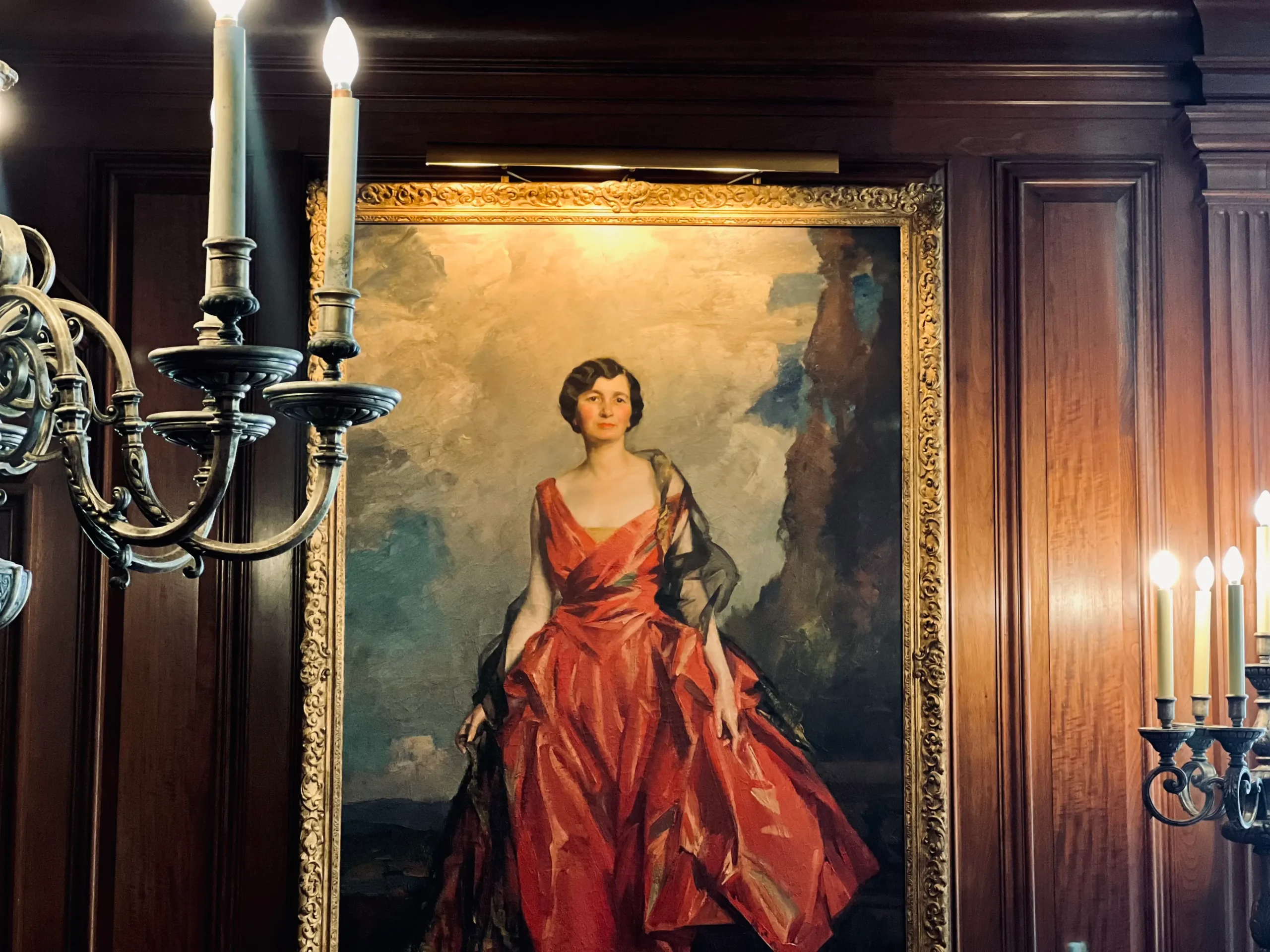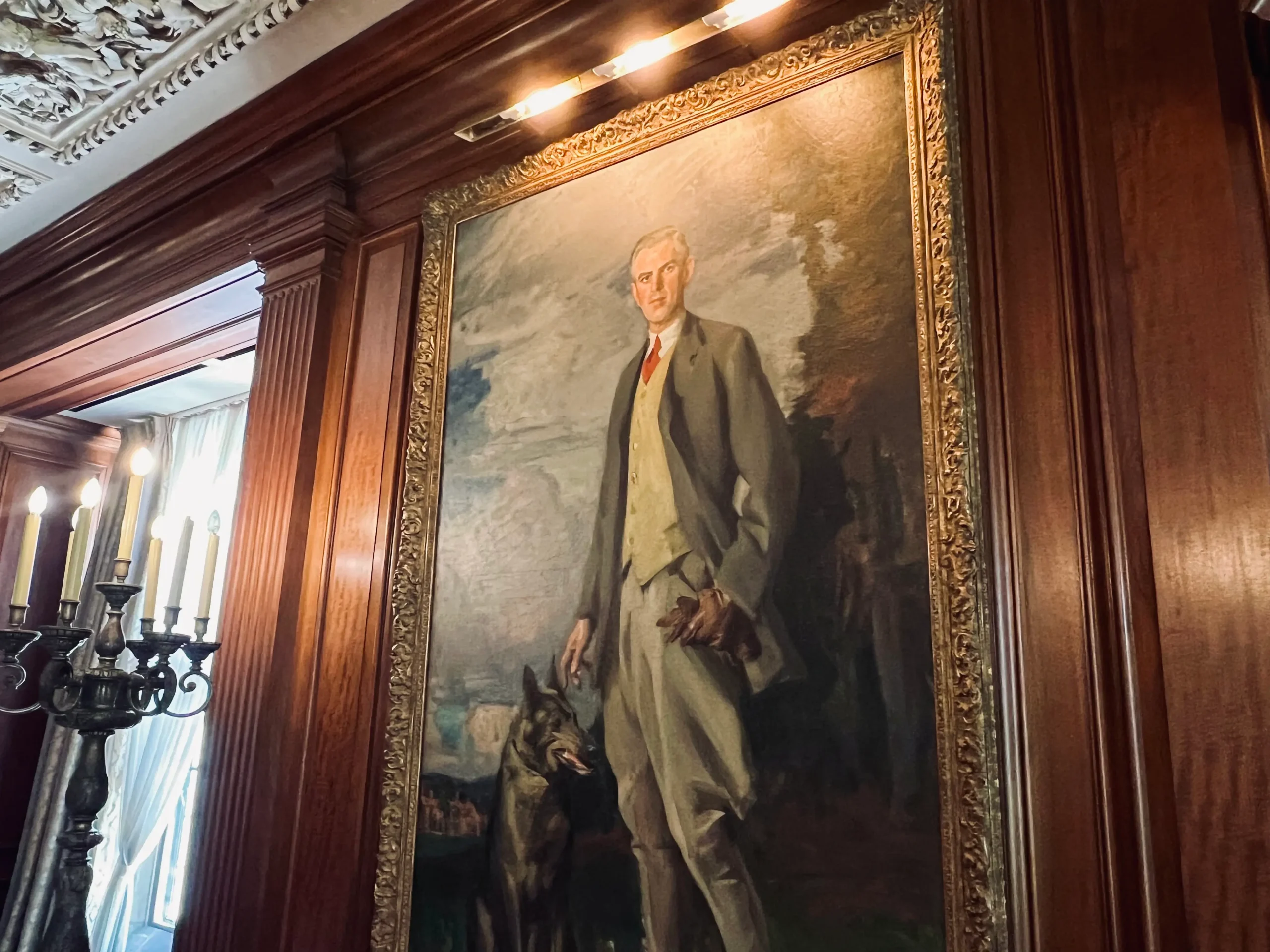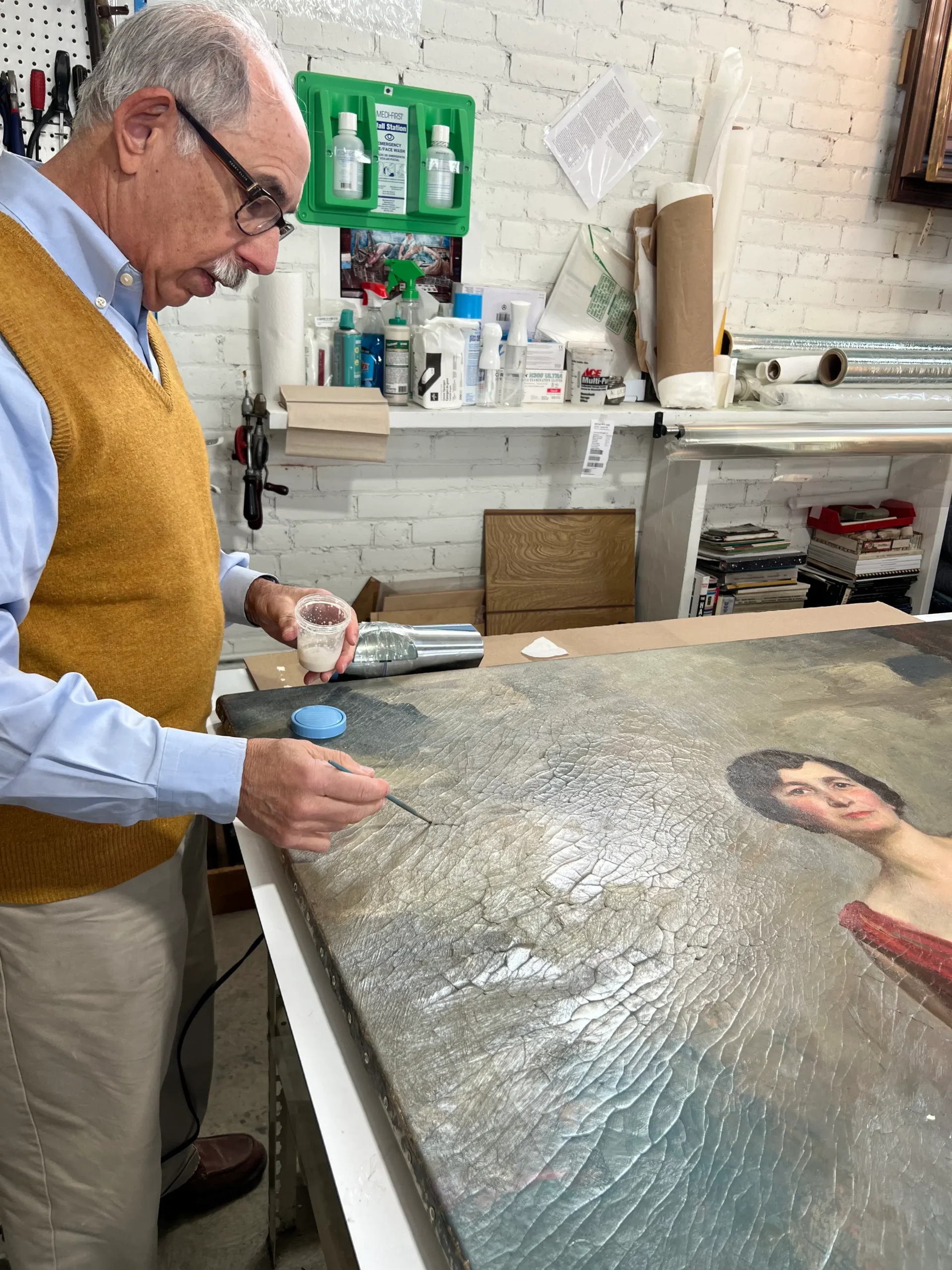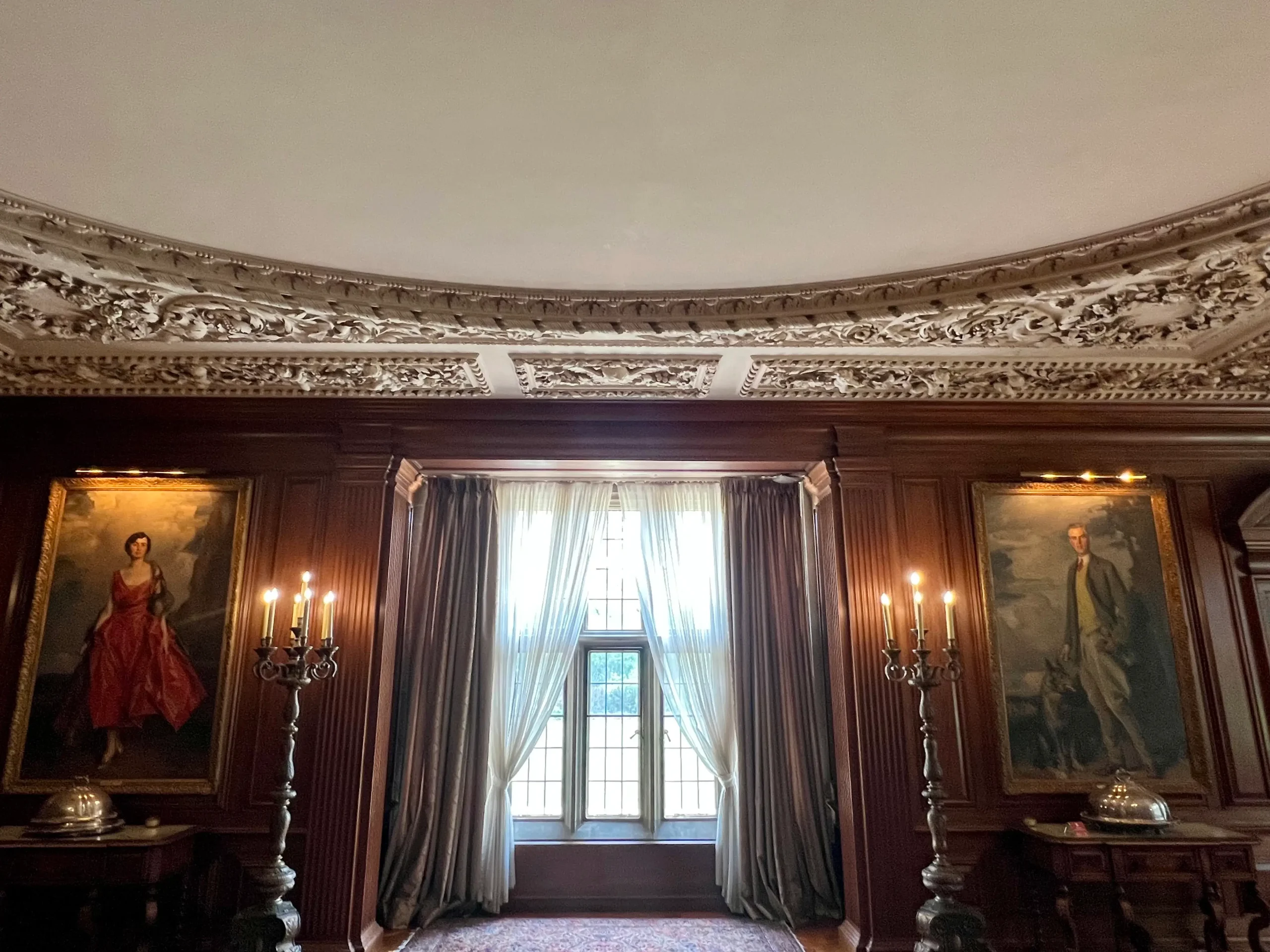
Just inside the ornate Christopher Wren Dining Room, two large, dignified portraits hang prominently on its rich, walnut-paneled walls —a beacon of commanding elegance. After months of careful restoration, the well-loved paintings of Matilda and Alfred Wilson have been given new life.
These full-length canvases, commissioned from high-society artist Louis Betts in 1927, were a heartfelt exchange between the Wilsons. Matilda commissioned Alfred’s portrait as a gift. Alfred, in turn, returned the gesture with one of her, creating a pair of portraits that now feel inseparable, forever gazing across the room they once filled with life.
Matilda’s portrait is especially rich in symbolism. The backdrop of storm clouds hint at the adversities she overcame. Rather than donning formal attire and jewelry, she chose a more approachable look, suggesting that despite her great wealth, she carried an air of simplicity. The very shoes and the delicate taffeta and organdy that inspired her gown still reside within Meadow Brook’s collection.

Alfred’s likeness, equally stately, mirrors her grace. Dressed in riding attire with his loyal German shepherd by his side, his image reflects the traditions of the English landed gentry, capturing a man equally at home on horseback as he was in the world of business and society.
Together, these portraits enrich the room’s story of gracious hospitality, as envisioned by Matilda, who designed the space to balance grand entertaining with the warmth of intimate family gatherings.
Not only are these portraits significant because their subjects depict Meadow Brook’s owners, but they are also original paintings. After Matilda Wilson’s death in 1967, some of Meadow Brook’s largest and finest pieces of art were sold at auction or bequeathed to her family. In recent years, Meadow Brook has sought to restore the historic mansion’s remarkable art collection through exceptional replicas hung in their original locations.
Restoration: A Labor of Love
Thanks to a generous donation from a Meadow Brook volunteer, these two paintings are now fully restored to continue sharing their stories for generations to come.

Great care was taken to preserve and restore these works to their original grandeur. Conservators Ken Katz and Daniela Pianigiani of Conservation & Museum Services explained that each painting required over 60-70 hours of meticulous work.
The process begins with a careful assessment, followed by the gentle removal of surface dirt and layers of old varnish. Conservation adhesive is then applied to tissue paper to stabilize cracks, and with the application of heat, the adhesive bonds to the canvas. Though tedious, each step is essential to ensure the paintings are preserved with the utmost care.
This work is about more than preserving paintings—it’s about safeguarding memories and honoring the lives that shaped Meadow Brook. These portraits are windows into a life of elegance, resilience and quiet grace.
Thanks to the care of skilled conservators and the generosity of donors, the legacy of Meadow Brook continues to be honored and shared.
For more information about how you can support Meadow Brook Hall and our remarkable collections, click below.
LEARN MORESee the Restoration as it Happened
Watch the reel below to catch a glimpse of the full restoration process.


